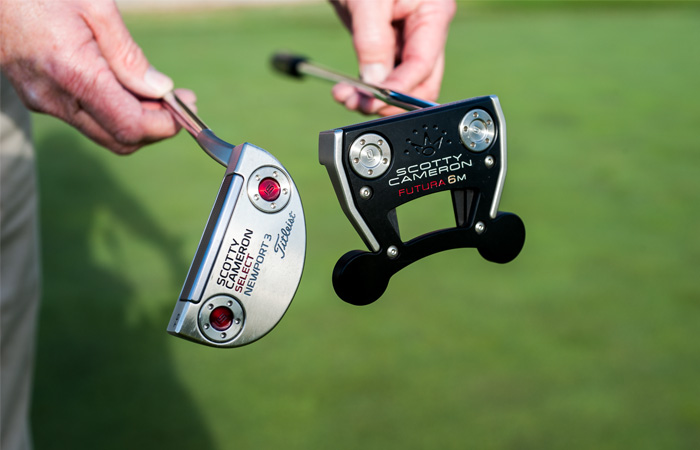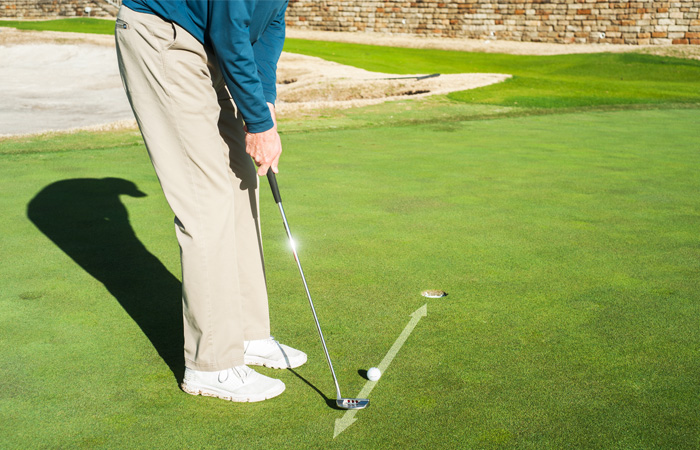Instruction — Know Your Putter
Putting is the simplest motion in golf. It has virtually zero body motion and requires a very small amount of energy. However, it can be part of golf that just drives golfers crazy. But just having a little direction in the type of putter and an understanding of the stroke can make all the difference in the world.
There are two styles of putters. One has the toe of the putter hanging down and the other has the putter head balanced throughout the face. Why is this important? The balancing of the putter face can affect the stroke that you make. When you balance the shaft of the putter in your hand and the toe hangs down, you have a style of putter that promotes face rotation. Face rotation in a putting stroke is good to a point but doesn’t need to be excessive.

Conversely, if a putter face balances perfectly parallel to the ground as it’s held, that style of putter is face balanced. Face balanced putters promote less rotation of the putter face throughout the stroke. Both styles of putter are equally as good. Great putters on Tour use both styles. You want to make sure you understand how each style of putter will affect your putting either positively or negatively.
Generally, a putting stroke that has a lot of face rotation might benefit from a face balanced putter. The face balanced putter may minimize the rotation and allow more putts to start on line. A putter with a ‘toe hang’ may help the golfer that has the putting stroke too square and ends up blocking their putts at impact. The extra rotation from the putter may free them up throughout the stroke.
Practicing some straight 4-foot putts is a good test to determine the style of stroke you have and the putter that you would benefit from. This short length putt has the putter swinging mostly straight back and through. If, from this distance, you have trouble with the face opening to the target line in the backstroke and then very inconsistent with the start point of the putt, you have too much face rotation. A face balanced putter could help improve your stroke. The opposite is too true for a “toe hang” putter. Golfers that practice holding the face too square back and through can create a blocking motion in their stroke. A toe hang putter will help to promote a more balanced motion back and through.
This article has represented some guidelines for your stroke and style of putter you choose to use. Regardless of the style of putter, you must feel confident with it and work to develop a repetitive stroke.

Tim Cusick is the Director of Instruction at the Four Seasons Resort and Club/Dallas at Las Colinas. The Northern Texas PGA named Cusick Teacher of the Year in 2005, 2009 and 2015, as well as the 2014 Horton Smith Award winner for education. He’s the author of ‘The Four Keys to Improve your Swing.’ Follow him on Twitter @timcusickgolf and visit his website: timcusickgolf.com.



